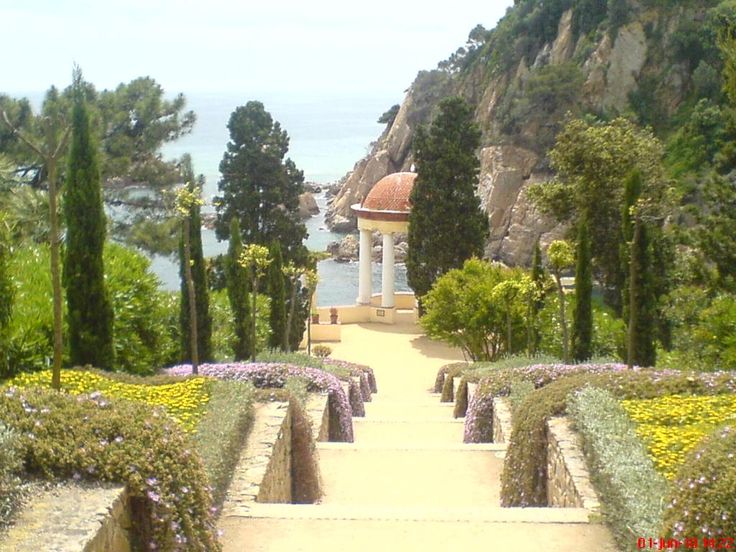Jardí Botànic Marimurtra | Blanes · Costa Brava
Located in Blanes, in Costa Brava, the Marimurtra Botanical Garden is one of the most beautiful gardens on the Mediterranean. At the top of steep cliffs running along the sea, you can enjoy one of the most spectacular panoramic views over the coastline and get to know more than four thousand plant species, most of them exotic ones, as well as several specimens that are extraordinary because of their age or size.
Marimurtra is the work of a man with a passion for nature. Carl Faust (Hadamar, Germany 1874-Blanes 1952), was a businessman residing in Catalonia who devoted his hopes, his efforts and all his fortune to make his dream come true, the Botanical Garden Marimurtra.
| Opening Times | ||
| Dates | Schedule | |
| From January 1st to March 26th | Sunday to Friday from 10:00 a. |
|
| From March 27th to June 4th | Monday to Sunday from 10:00 a.m. to 6:00 p.m.* | |
| From June 5th to September 17th | Monday to Sunday from 9:00 a.m. to 7:00 p.m.* | |
| From September 18th to October 15th | Monday to Sunday from 10:00 a.m. to 6:00 p.m.* | |
| From October 16th to December 31st | Sunday to Friday from 10:00 a.m. to 3:00 p.m.*, Saturdays from 10:00 a.m. to 5:00 p.m.* | |
| *Last admission 1 h before closing Check out here the dates with incidences before your visite to Marimurtra Botanical Garden. |
||
Price
8 €
TICKETS
(+ Information on fees, photographic sessions and other uses here).
Discounts with:
Rules of Marimurtra
Make a donation
Language
Activities in Marimurtra
FOLLOW US!
Encara no tens entrades 😱 per venir a conèixer Cada 24 d’abril commemorem la mort de #CarlFaust
Bona diada de Sant Jordi! 🌹📚 Si busqueu un
La brisa del #Mediterrani fa més bonic #Marimurtr 🌺 Una primavera impecable que fa vibrar #Marimu T’ho perdràs? 🤭🎨🌺
Reserves a l’enlla
Feeeeeeliç #diumenge! 😃 La Wisteria sinensis
Words can’t describe it 🦋
Paradise in @blane Aquest diumenge, torna en Dani Iglésias 👏amb e
Ens encanten els dilluns de #vacances! 🕺🏻Com
Happy #weekend in a happy #place ✨🌊 @blanes
Aquesta #SetmanaSanta volem veure les vostres imat
Blog
- We celebrate St.
Jordi Day at the Marimurtra
- The Board of Trustees of the Carl Faust Foundation incorporates three new members
- Resum anual del seguiment dels ocells al Jardí Botànic Marimurtra i rodalies – 2022
Jardí Botànic Marimurtra | Blanes · Costa Brava
Located in Blanes, in Costa Brava, the Marimurtra Botanical Garden is one of the most beautiful gardens on the Mediterranean. At the top of steep cliffs running along the sea, you can enjoy one of the most spectacular panoramic views over the coastline and get to know more than four thousand plant species, most of them exotic ones, as well as several specimens that are extraordinary because of their age or size.
Marimurtra is the work of a man with a passion for nature. Carl Faust (Hadamar, Germany 1874-Blanes 1952), was a businessman residing in Catalonia who devoted his hopes, his efforts and all his fortune to make his dream come true, the Botanical Garden Marimurtra.
| Opening Times | ||
| Dates | Schedule | |
| From January 1st to March 26th | Sunday to Friday from 10:00 a.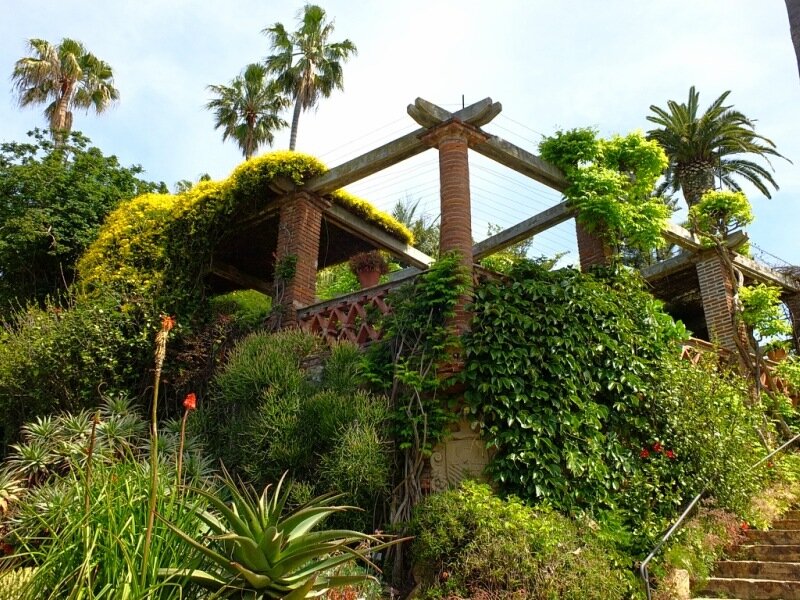 m. to 3:00 p.m.*, Saturdays from 10:00 a.m. to 5:00 p.m.* m. to 3:00 p.m.*, Saturdays from 10:00 a.m. to 5:00 p.m.* |
|
| From March 27th to June 4th | Monday to Sunday from 10:00 a.m. to 6:00 p.m.* | |
| From June 5th to September 17th | Monday to Sunday from 9:00 a.m. to 7:00 p.m.* | |
| From September 18th to October 15th | Monday to Sunday from 10:00 a.m. to 6:00 p.m.* | |
| From October 16th to December 31st | Sunday to Friday from 10:00 a.m. to 3:00 p.m.*, Saturdays from 10:00 a.m. to 5:00 p.m.* | |
| *Last admission 1 h before closing Check out here the dates with incidences before your visite to Marimurtra Botanical Garden. |
||
Price
8 €
TICKETS
(+ Information on fees, photographic sessions and other uses here).
Discounts with:
Rules of Marimurtra
Make a donation
Language
Activities in Marimurtra
FOLLOW US!
Encara no tens entrades 😱 per venir a conèixer Cada 24 d’abril commemorem la mort de #CarlFaust
Bona diada de Sant Jordi! 🌹📚 Si busqueu un
La brisa del #Mediterrani fa més bonic #Marimurtr 🌺 Una primavera impecable que fa vibrar #Marimu T’ho perdràs? 🤭🎨🌺
Reserves a l’enlla
Feeeeeeliç #diumenge! 😃 La Wisteria sinensis
Words can’t describe it 🦋
Paradise in @blane Aquest diumenge, torna en Dani Iglésias 👏amb e
Ens encanten els dilluns de #vacances! 🕺🏻Com
Happy #weekend in a happy #place ✨🌊 @blanes
Aquesta #SetmanaSanta volem veure les vostres imat
Blog
- We celebrate St.
Jordi Day at the Marimurtra
- The Board of Trustees of the Carl Faust Foundation incorporates three new members
- Resum anual del seguiment dels ocells al Jardí Botànic Marimurtra i rodalies – 2022
Marimurtra Botanical Garden and Karl Faust Foundation
Marimurtra Botanical Garden 9000 3
Costa Brava Botanical Garden is a privileged place to enjoy botanical, archaeological, cultural, landscape and human heritage. It is a paradise of the world of vegetation, which, thanks to its geographical context, retains a close connection with the Mediterranean.
Marimurtra stretches over 4 hectares of land, divided into 3 climatic zones: subtropical, temperate and Mediterranean. The garden has a large collection of plants, more than 4000 varieties from 5 continents, some of them are unique in their age, size and rarity.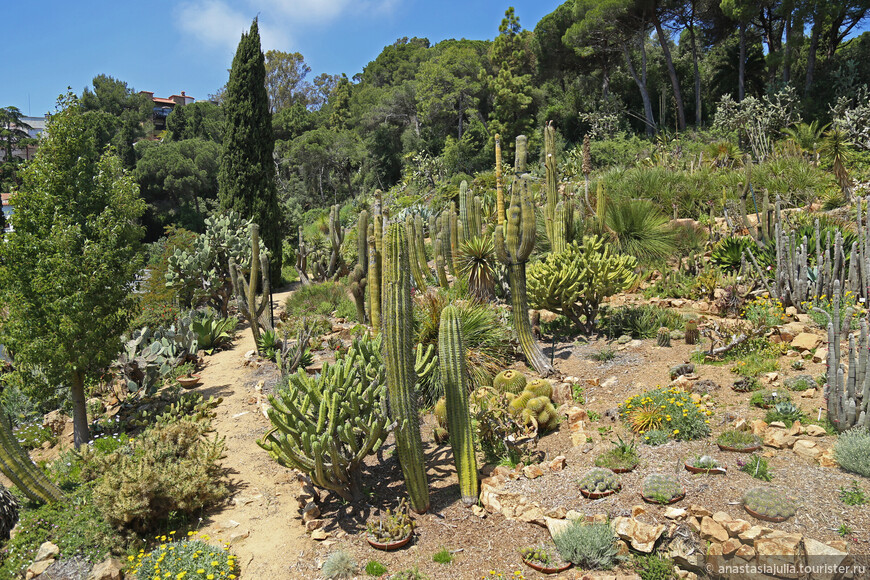
The best example of the unity of garden architecture is the Linne Temple – without a doubt one of the most beautiful corners Costa Brava , with an exclusive location in the first bay of the coast, Sa Forcanera. The garden itself is full of amazing corners such as the Gazebo (Pergola), the Puig Font staircase and Coeur, the Keepers’ House.
Marimurtra was declared National Heritage of Catalonia and in 2009 was awarded the Cross of Saint George, the highest award established by the Government of Catalonia. The garden is also a member of the Association of Botanical Gardens of Ibero-Macaronesia and other associations of a cultural, scientific and botanical nature.
Marimurtra is the only botanical garden of the Costa Brava and one of the two botanical gardens of Catalonia.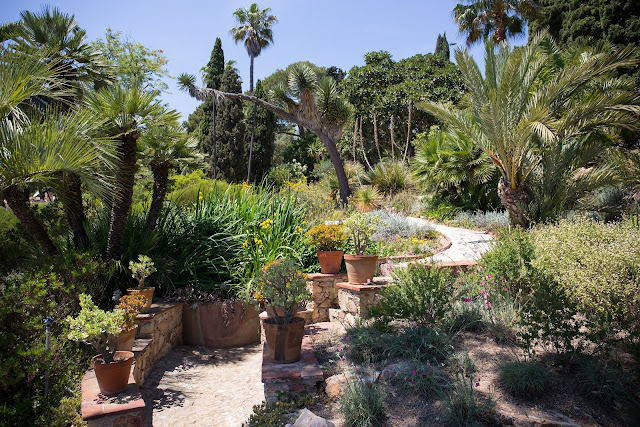
Why Marimurtra is called Botanical Garden ?
Because it is a living museum with the following functions:
Research
Preservation and classification
Spreading interest in botany
9000 3
Weddings
A wedding over the Mediterranean Sea surrounded by romantic architecture and unusual vegetation? AT Marimurtre it’s possible! Marimurtra Botanical Garden is a privileged, unusual, unique place to celebrate the most special day of your life.
For an exclusive event in nature, we offer you several areas to choose from:
90 003
• Temple Linn – a symbol of the Romanesque architecture of the Costa Brava.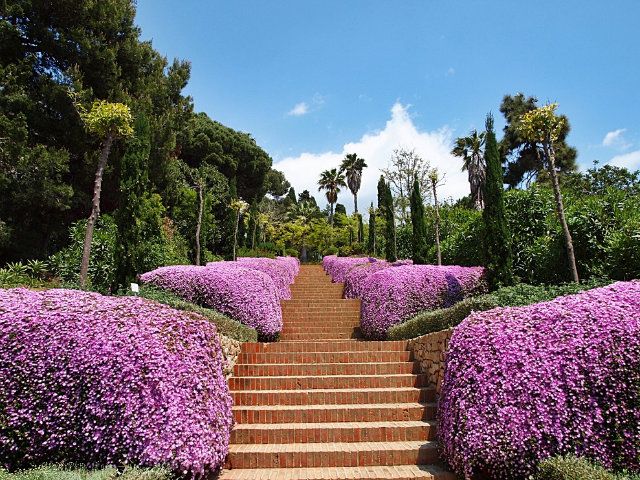
• Lloret and Goethe sites: here you will experience the Mediterranean like never before. You are in the perfect place and moment to feel and live it.
• Tossa site: evergreen and youthful? How desirable! And it is in Marimurtra that everything is painted with the color of nature. And if your ideal formula is the feeling of refreshing greens with turquoise sea breeze, then in this enclave you can live this long-awaited moment under the tutelage of our professionals.
Marimurtra spread out luxuriously the great natural garden , dedicated to the kingdom of the plant world. The 4 hectares that make up the garden are divided into 3 independent zones with different characteristics – this is a large garden that combines three spaces.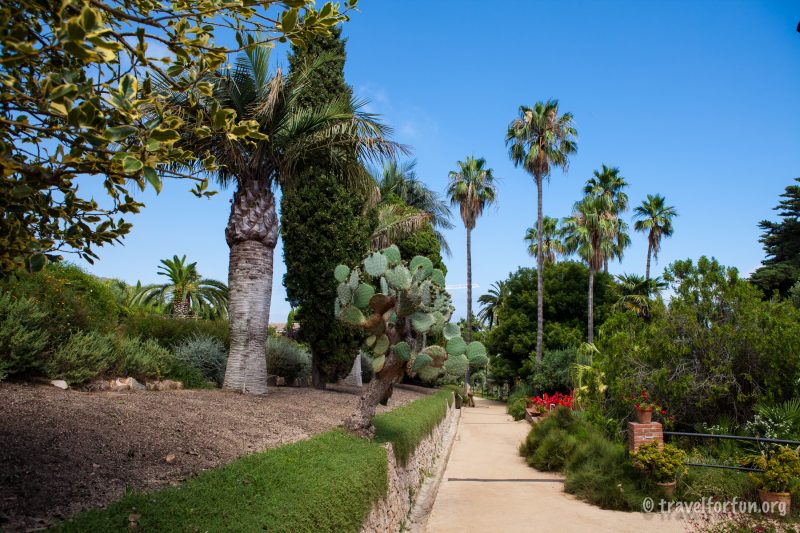
These gardens, which contain a variety of plants from around the world, allow you to travel through jungle arbors, through the musical bamboo forest of the East, through the dry expanses of America, corners of Australia and many other kingdoms of flowers. This makes Marimurtra an ideal location for film adaptations, photo shoots, fashion catalogs and commercial meetings.
Taking advantage of our location garden offers an innumerable number of unique and privileged scenarios. Due to its diversity, it is an ideal venue for events. A special, relaxing, heavenly atmosphere – ideal if you want to break out of your routine or host a corporate event. Nights of Marimurtra 90
014
Every year Botanical Garden holds its own music festival.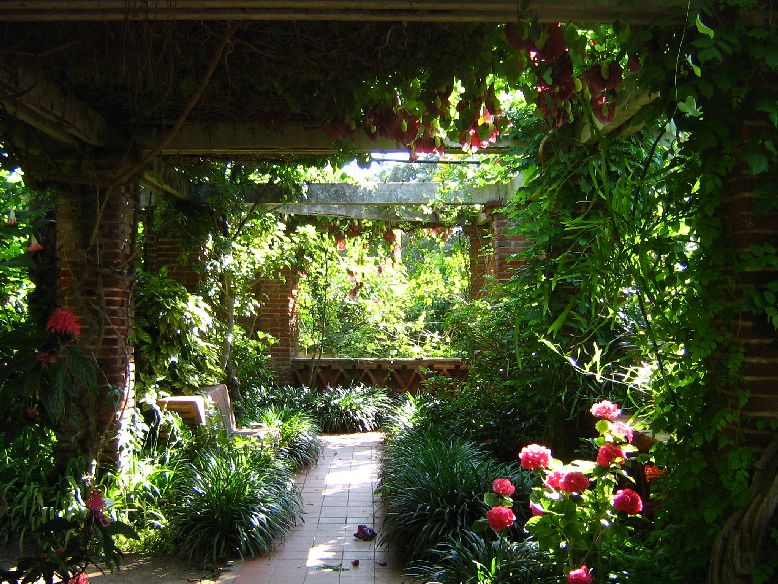
Les Nits de Marumurtra is the perfect opportunity to enjoy the spectacular and iconic event of the Costa Brava at the Linn Temple. The festival is unique in its entertainment, cultural and musical offerings, largely due to its location and carefully prepared musical program. Les Nits de Marumurtra are held in a small format, with the participation of an exclusive audience, with a limited number of invited guests – a sophisticated atmosphere of selectivity is created.
More information about Les Nits de Marumurtra : Marimurtra.cat/nitsmarimurtra |
Contacts 002 Blanes Costa Brava ( Spain )
Tel: +34 972 33 08 26
marimurtra.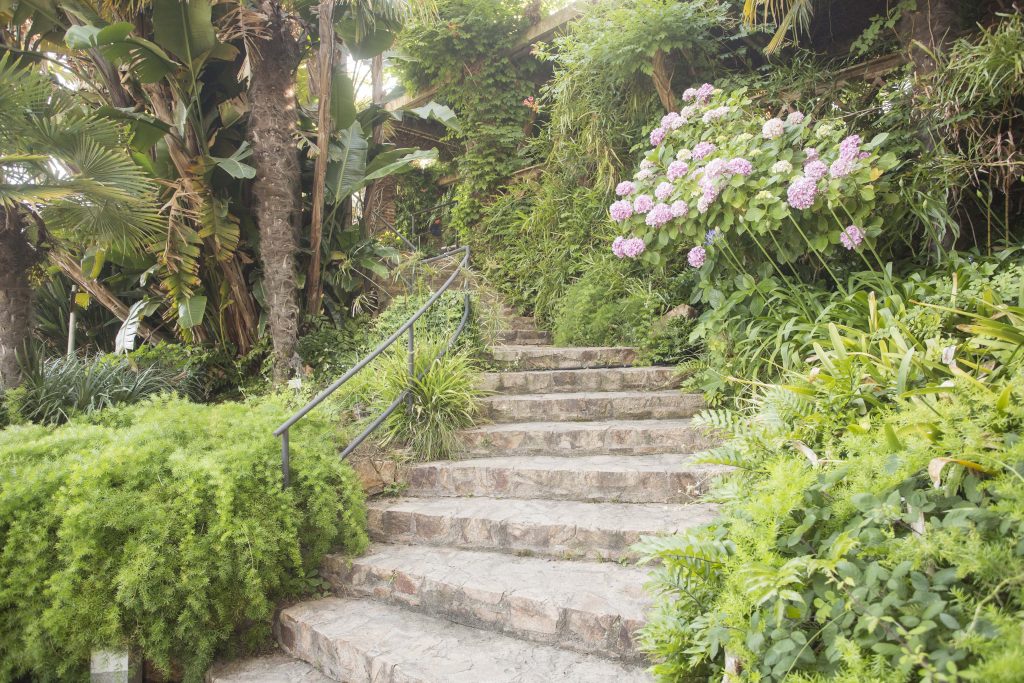
3 years with the assistance of Kortin Hermanos » – a machine-building company dealing with pipes and taps. The choice fell on Karl – a well-educated manager who speaks Spanish, French and English, who sought to conquer the world. The young man who arrived from Frankfurt was the eldest son of a poor but well-to-do family, a representative of the new liberal Germany that had been formed thanks to Chancellor Bismarck a few years ago.
Faust immediately confirmed the correctness of the choice in his favor and, in a short time, became the manager of the Spanish branch of Cortin Hermanos. Few people knew that the young German, an excellent businessman, was fascinated by plants and insects, the forest and the sea as a subject of deep scientific interest in the natural environment. He observed nature since childhood, and we can trace this in later letters: sometimes he liked to recall conversations with his grandfather – a philanthropist, a pleasant person in communication, filled with the folk wisdom of local peasants.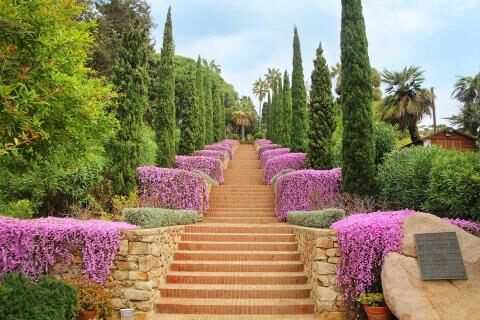
For a very short time, Faust was fascinated by Spain and had no intention of leaving it. He made friends fairly quickly and established himself so firmly that over the years he began to feel more like a local than a native of Germany. This integration was strengthened by the fact that in 1908 in Barcelona, Faust, together with his countryman Wilhelm Kammann, founded his own company Faust and Kammann, which still exists today.
Starting from this moment, we can trace how the 30-year-old Karl became fully involved in the social and cultural life of Barcelona, and later of the whole of Catalonia.
It is at this stage of life that Faust discovers the country for himself: during his travels with friends in the Pyrenees, following the coast, he gets to know the central part of Catalonia … and finds the best corner for himself – Blanes. Here begins the Costa Brava, where some cliffs, rising from the sea, cut and swallow part of the coast, while others only gently caress it. And it is here, in 1918, that Faust decides to start a grandiose project: to acquire land and set up a botanical garden, which will serve as a haven for scientists and students of continental Europe, who, due to the cold climate, cannot study the flora of a tropical and dry climate in practice.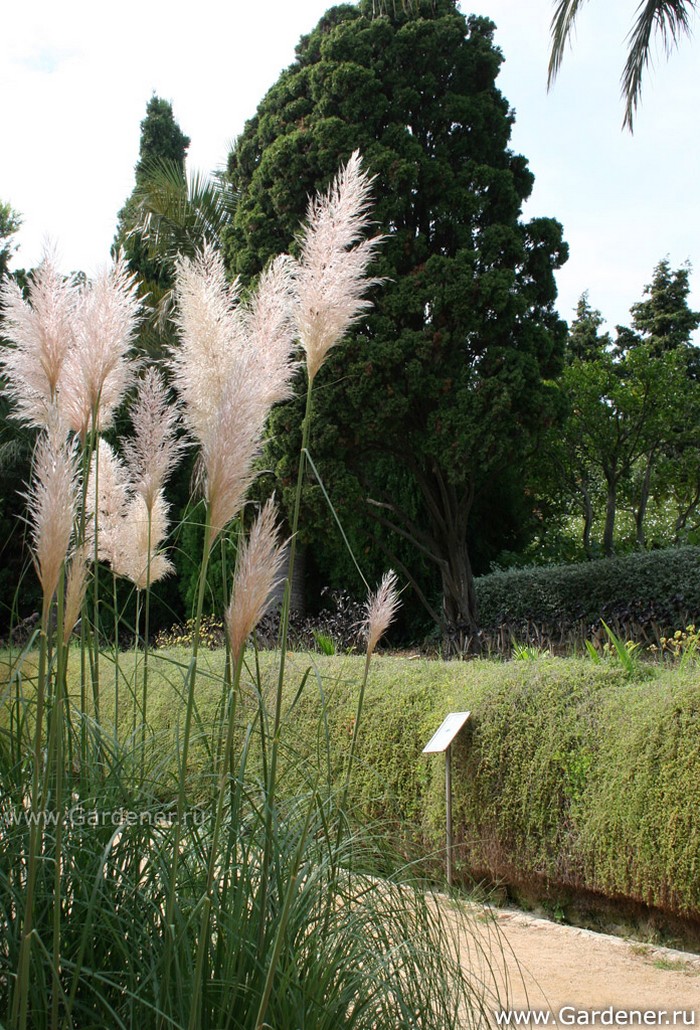
“What until now has been small perennial vineyards must develop into a whole republic of epicurean biologists,” writes his botanist friend Josep Quartecasas in January 1938. In this direction, Karl developed his creation until the mid-20s, before deciding to move away from all business and concentrate exclusively on the design, construction, seating and maintenance of the garden, which he called Marimurtra, that is, the Sea and Myrtle – symbols of the fusion of the flora of the Mediterranean and the seas.
He spared neither time nor money for his creation. In 1921, construction work began on the house and library (which eventually expanded and became the envy of many connoisseurs of literature), designed by the famous architect Josep Goday. But the real change began with the arrival of the Swiss Zenon Scheiber, a budding landscape painter and gardener, who, with the help of 4 or 5 people provided by local builder Pepito Burset, worked tirelessly on landscape design for the next 4 years.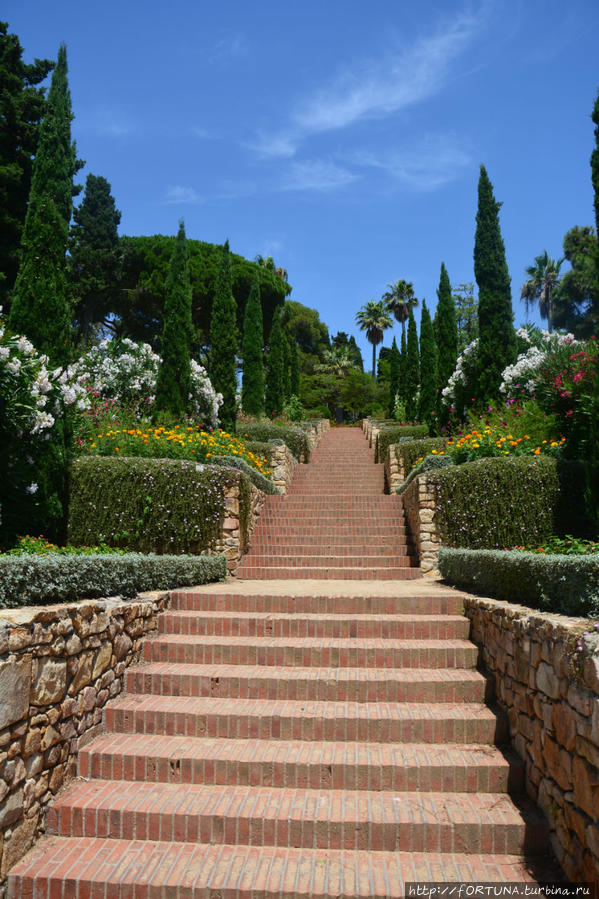
Meanwhile, Faust immersed himself in the study of botany, science and classification. He read a lot, communicated with the most important specialists of the country and made contacts in other countries.
He was close friends with Puis Font and Ker, a pioneer in the study of the systematization of botany in Catalonia, and through him he met Josep Quatrecasas, Miguel Aldrufei and Carlos Po.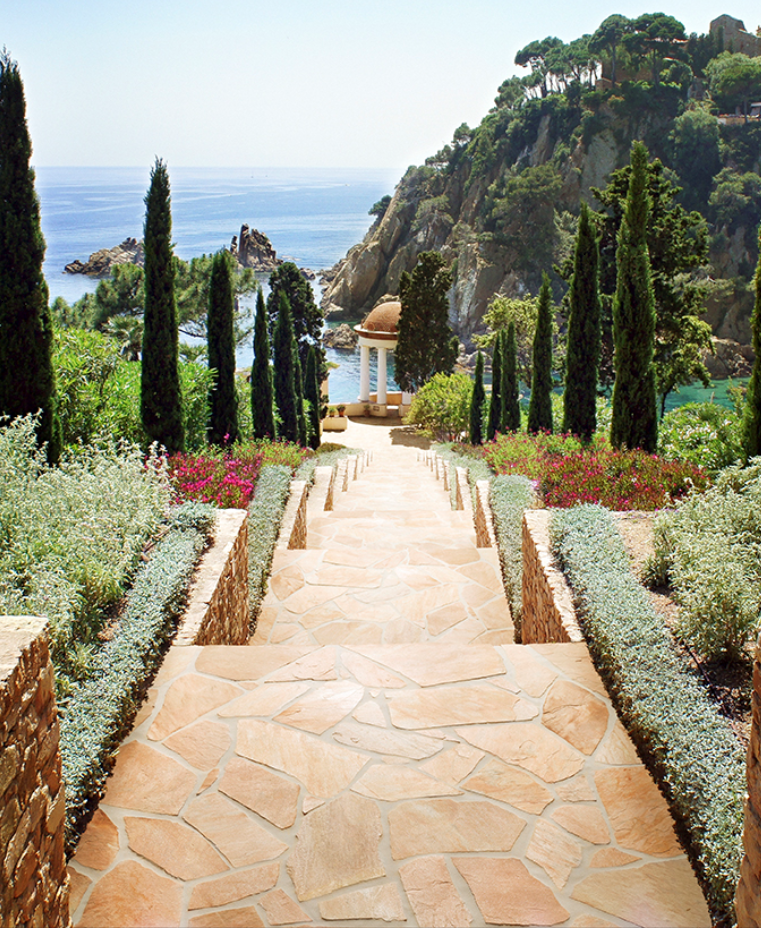
During the Belgian conflict, Marimurtra was not damaged, and yet the garden, already beginning to take shape, remained under the likely threat of capture and destruction. Karl decides to act: a Foundation is created in Geneva, in which various societies of botany and natural history are involved. The foundation is now responsible for the success of the garden project: thus the International Society for Mediterranean Biology was born. The Board of Trustees was given the responsibility of managing the garden during Karl’s absence, and it was this that made it possible to avoid the possibility of the garden being confiscated.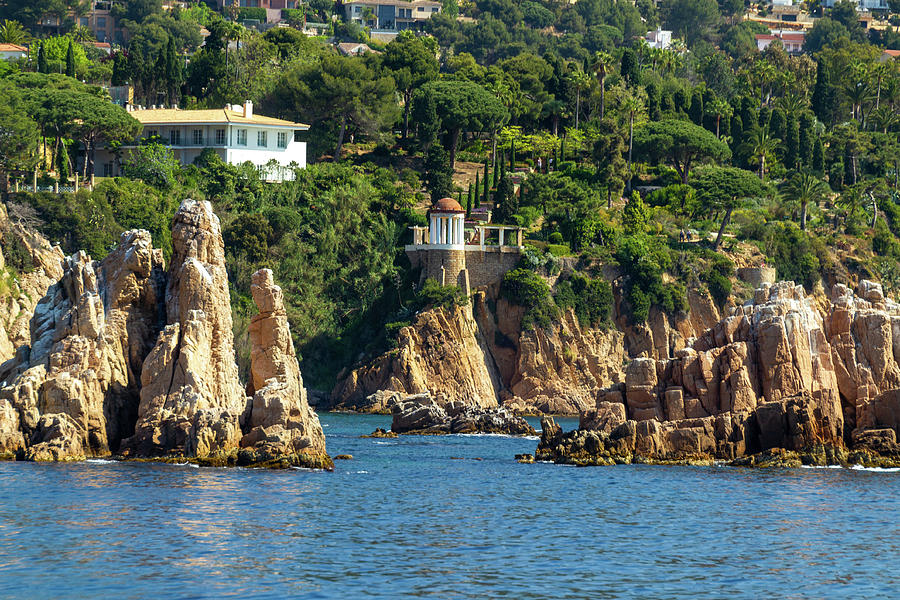
The struggle for the garden helped Carl achieve legalization in Francoist Spain, after the end of the war, he will also enlist the support of the government by including several communities in the country in the fund. Of course, Karl does not leave his project without day-to-day attention, moreover, he is no longer able to afford to hire another managing specialist in the field of botany and is content with the work of several gardeners working tirelessly from dawn to dusk to maintain the garden. However, Faust, from 19Having finally settled in Blanes for 39 years and visiting the garden every day, he remains with only one of the workers – the talented, stubborn Avelino Rabassa, who worked wonders at every stage of the development of the garden.
Carl died in April 1952 at the age of 78. In recent years, he was especially concerned about the future of the garden, but he passed away with the confidence that his great creation would be continued.
It is also known that Karl used all available opportunities to replenish his library: to support those who later became real experts in their field, to advise institutes and individuals.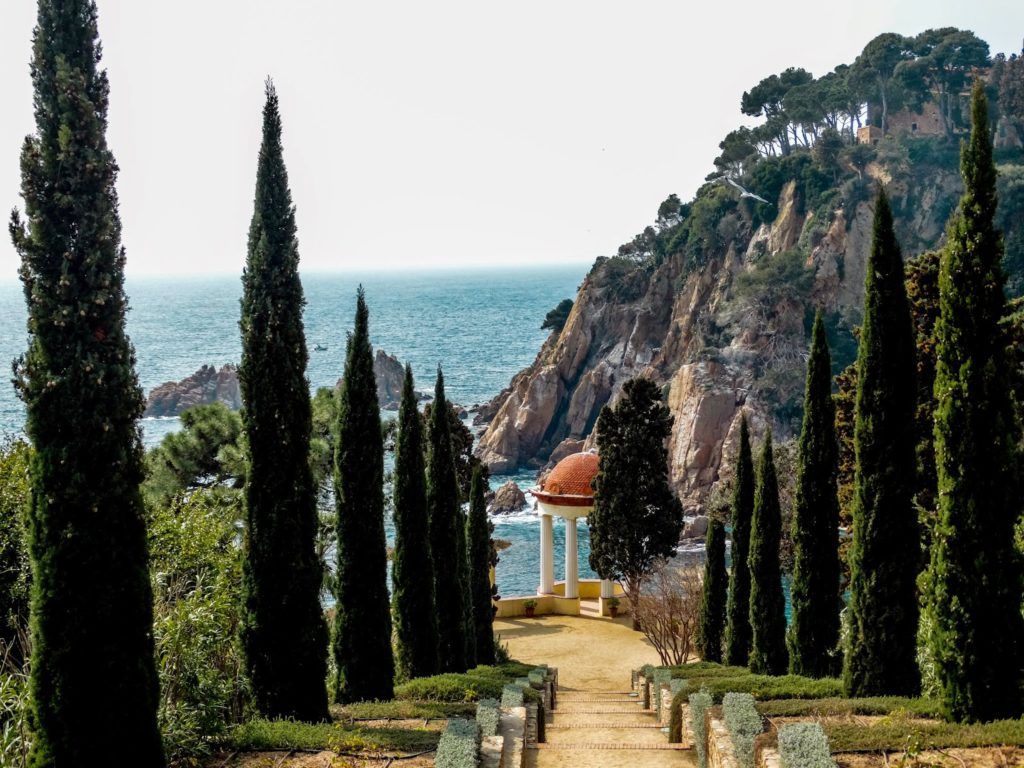
In 1951, Karl created a foundation, which, according to the law, was to become the heir to the botanical garden and its ideas.
Karl Faust was a rare representative of those very patrons of science, who are very few in our country. He encouraged botany without being a botanist, international relations without being a diplomat, science without being a scientist, the training of researchers without being one. Fascinated by the work of Goethe, Carl wrote out several of his sayings from his favorite work “The Years of the Teaching of Wilhelm Meister” and immortalized them on Goethe Square in Marimurtra. These lines say “I love the one who loves the impossible” and “Send us a persistent spirit and good mood on earth, and we will leave, O Gods! heaven to you.” A very Faustian way of understanding the world.
Marimurtra Botanical Garden in Blanes, the pearl of the Costa Brava – Touristim
One of the most beautiful botanical gardens in Spain – Marimurtra in Blanes – was built in 1921.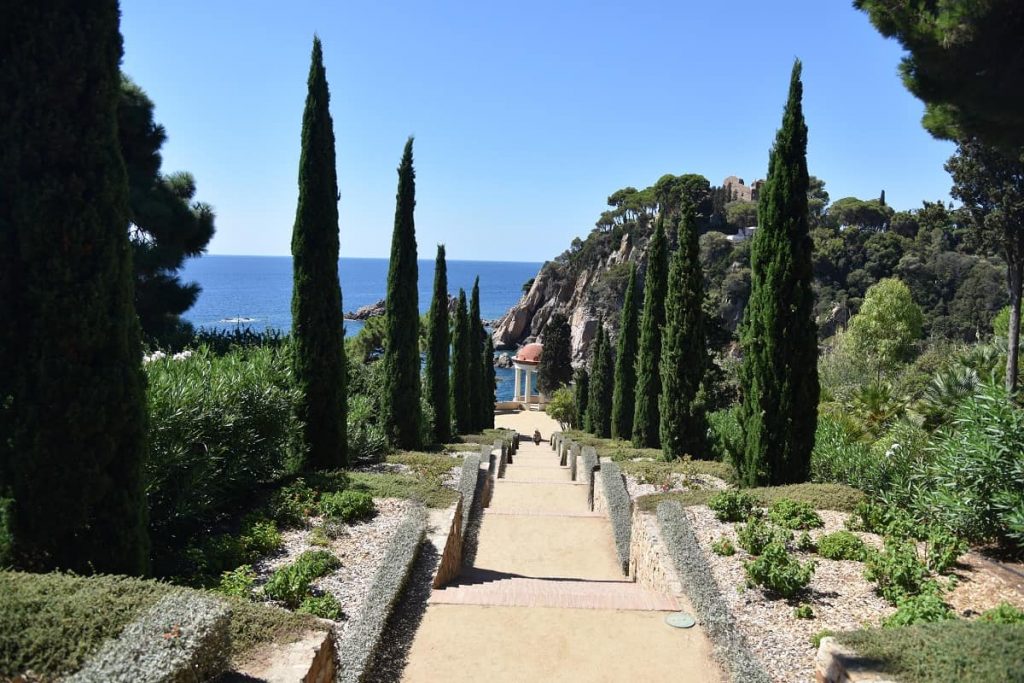
In many ways, the flora of the Costa Brava, one of the pearls of which is the resort town of Blanes, owes its popularity among tourists. Here, palm trees traditional for the Mediterranean coexist with desert cacti of all kinds and rocky vegetation. Visitors can take an unusual flower with them as a keepsake – souvenirs in pots are sold at the entrance to the garden.
Natural areas of Marimurtra Garden
Blanes is a small town. Therefore, tourists will have no difficulty finding its most popular attraction. The botanical garden is located somewhat away from the city port, on top of a picturesque mountain. The walk from the center of the settlement takes about 30 minutes. The most convenient option to get to Marimurtra is a special bus that runs every half an hour.
In Spanish, the correct pronunciation of the name of the garden is Mar I Murtra, which means the Sea and the myrtle tree. The name reflects the diversity of vegetation on the territory of the complex. In total, there are three complexes in Marimurtra, each assigned to a specific climatic zone: subtropical, temperate and Mediterranean. In turn, each of them is divided into 6-8 smaller zones dedicated to the flora of specific countries, for example, Mexico, the Canary Archipelago, China, etc.
In total, the Marimurtra Botanical Garden in Blanes has about 3,000 plant species. Without exception, each species is accompanied by a plate with brief information about the halo of growth – an opportunity not only to admire the natural beauties, but also to learn a lot of new things. The park looks especially beautiful in spring – its entire area (which is several hectares) is covered with a motley carpet of fragrant flowers.
In general, on the territory of the botanical garden you can find a lot of interesting things besides plants.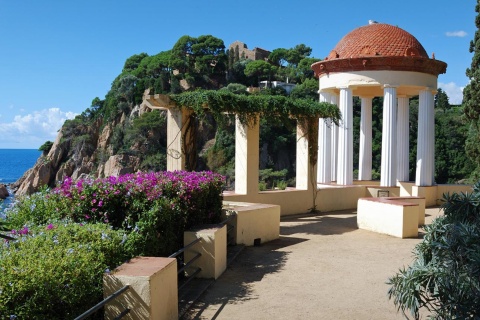
Opening hours and entrance fee to the garden
It is noteworthy that the Marimurtra Botanical Garden is an attraction that is quite cheap to visit, which is rare in Spain. For entrance to the territory of the complex is charged 6 euros . During the peak season, the garden for tourists is open from 9:00 to 20:00.
When you first get acquainted with the Marimurtra botanical garden in the Catalan town of Blanes, it may not seem so picturesque. But it is enough to delve into it, walk along the rocky terraces right above the sea, and it will be simply impossible not to appreciate this unique place.

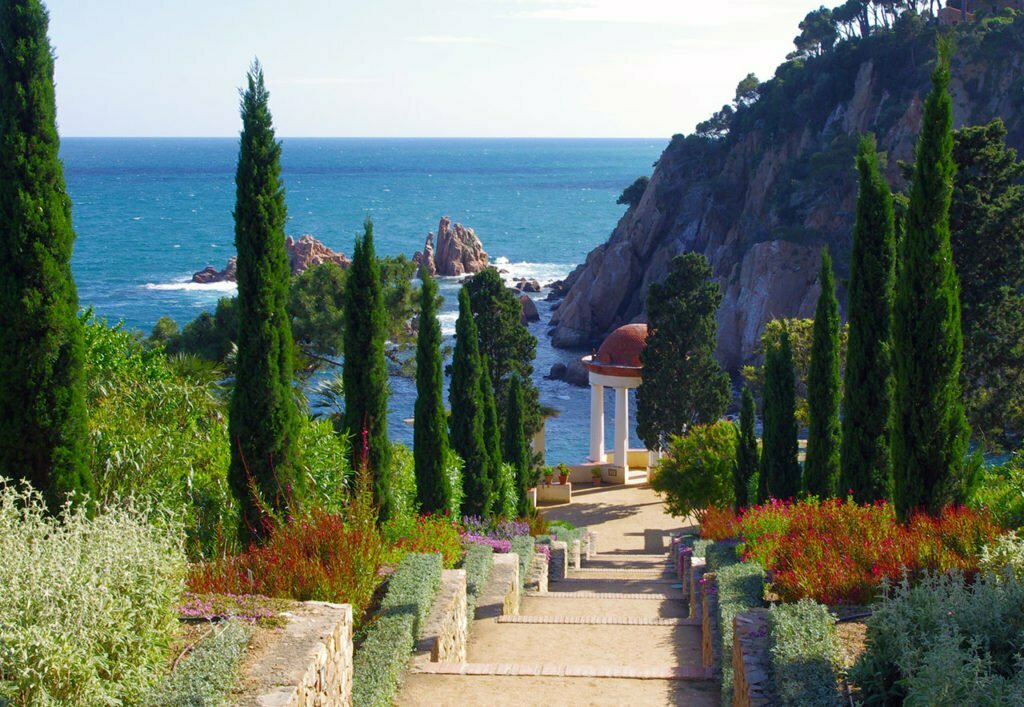 Jordi Day at the Marimurtra
Jordi Day at the Marimurtra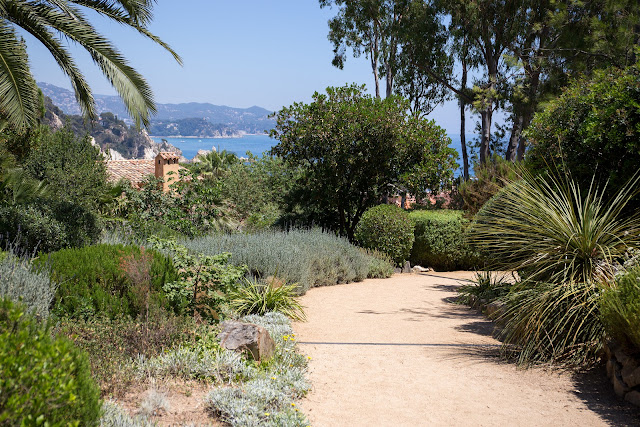 Jordi Day at the Marimurtra
Jordi Day at the Marimurtra